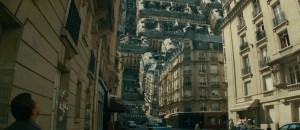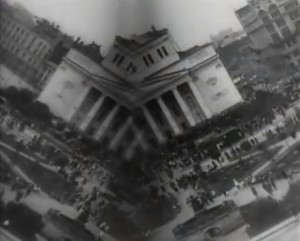This fall I took a Social Theories class, which went over a bunch of the big names in sociological theory- including Marx, Gramsci, and Benjamin (as well as McLuhan, whom Corey has mentioned before- McLuhan is most famous for his idea of “the medium as the massage”).
I’m sure most of us have studied Marx in some form beginning in high school, but Gramsci, at least for me, remained unknown until this fall. Gramsci had a very interesting life, and because of his tumult, a very interesting perspective on social theory.
Gramsci was born to a poor family in Sardinia in the late 1800s. He was born with health problems, including a spine deformation, which doctors treated by hanging him upside down from the ceiling–he only grew to about five feet tall. Although most people from his town were illiterate, Gramsci earned a scholarship to the University of Turin. There, he founded a socialist newspaper that was a response to the growing socialist movement in Italy. The socialist party eventually folded into the communist party, and Gramsci was sent to Moscow as a representative of the Italian Communist party. While in Russia, Mussolini took over Italy with the Fascists and upon his return, Gramsci was arrested because as a communist he was viewed as a challenge to the Fascist regime. While in prison, Gramsci wrote his “prison notebooks”, which were written mostly in code, due to heavy censorship by the government and prison authorities. His notebooks were fragmentary thoughts that he eventually planned to create into a book, but he died in prison before his notes could be organized into a cohesive novel. Even so, his notebooks were published posthumously. They were snuck of out the prison by his sister-in-law, who knew the code words Gramsci used to speak about Marx, and other communist leaders. The notebooks outline his thoughts on why the Fascist party came to power, why the socialist revolution failed, and most importantly- what could the oppressed (subaltern) due to overthrow their oppressors (the hegemony).
Gramsci’s argument is complicated, and this is not made easier by the language he used to write his theories in order to avoid them being confiscated by prison guards. His basic argument, which I spoke briefly about in class, is this:
You have the hegemonic power (what Marx calls the bourgeoisie) and the subaltern (Marx’s proletariat). The hegemonic power maintains control of the subaltern either by force- what Gramsci calls “coercive power”, or spontaneous consent. Spontaneous consent is achieved when the hegemonic group convinces the subaltern that their lowly position in society is natural/deserved- Gramsci might say an example of this would be the “American Dream”, i.e. that anyone can succeed in American society if they pick themselves up by the bootstraps. This view, dictacted by those in power, clouds over the societal irregularities that perpetuate the wealth gap, keeping the “have-nots” poor in comparison to the “haves”, and instead places the blame on the “have-nots”.
Gramsci marries his theories of class struggle with culture via his theory of “folklore”. By folklore, Gramsci means pop-culture- the music, film, advertisements, newspapers, etc. particular to a society. He sites folklore as the foundation of subaltern thought, that stands in opposition to “official” conceptions of the world- that being the ideology that the hegemonic power imposes on the subaltern. In layman’s terms: cultural expressions (pop-culture) are products of what the subaltern truly think and feel, without the total interference or censorship of the hegemony.
Gramsci narrows the idea of folklore further with his term “common sense”. Common sense is the cultural expressions particular to a certain time and people. Out of this common sense, there needs to be found “good sense”.
In order to explain good sense, it is first necessary to explain “organic intellectuals”. Organic intellectuals are people in society that are able to sift through the common sense of a particular society to find its oppositional characteristics (elements of culture that are counter-hegemonic). For example, an organic intellectual in present day American might read “The Hunger Games”, “Divergent”, or see the movie The Giver, and identify a common theme of oppression, or a desire to box people into categories which they are trapped in for their lifetimes. The recognition of the themes of oppression in culture would be “good sense”.
Having found good sense, it is the job of the organic intellectual to convince the rest of the subalterns of that society to rally against the hegemonic power in order to overthrow it. This is a long process, as all of society needs to be convinced of their “false consciousness” (that they have been presented a false reality by the hegemonic power, like the “American Dream” example). Unlike Marx, Gramsci did not think this was bound to happen, but thought under the right circumstances it was certainly possible.
This explanation does not do Gramsci any justice, and certaintly detracts from his argument by simplifying it so much…but he, along with Marx, are amazing intellectuals that are worth trying to understand.
And finally, to boil it down into the simplest terms possible:
You have the hegemonic power, and the subaltern. In order for the subaltern to escape their oppression, an organic intellectual from the subaltern group needs to sift through their society’s pop-culture, find cultural expressions that represent their lived reality, which stands in opposition to the ideologies the hegemonic power has been imposing on them, and unite all the other subalterns around the realization that they as a group are oppressed. Then the subalterns rise up and throw off the hegemonic power.
Once again, butchering Gramsci here but hopefully that provides some clarity!


